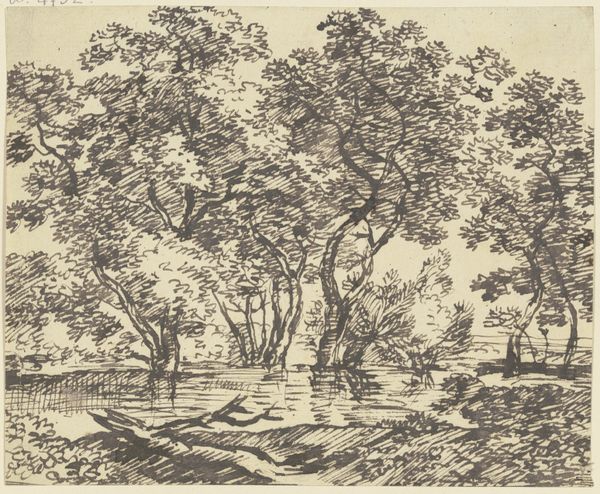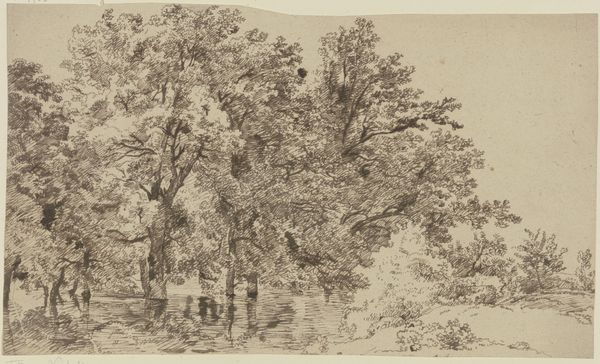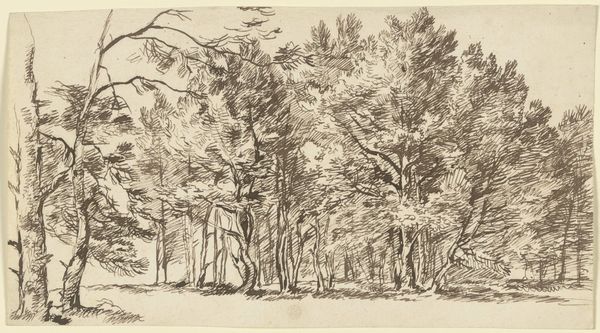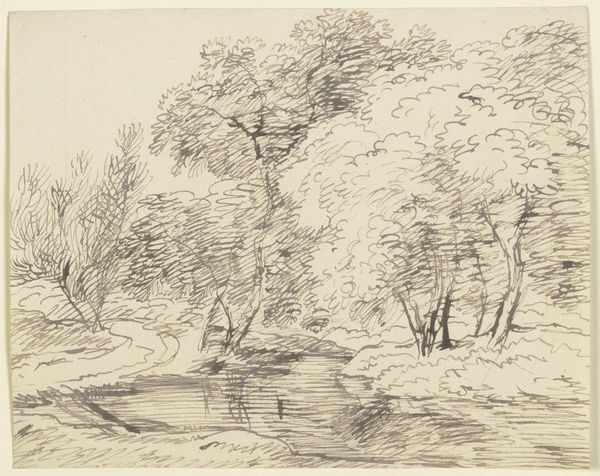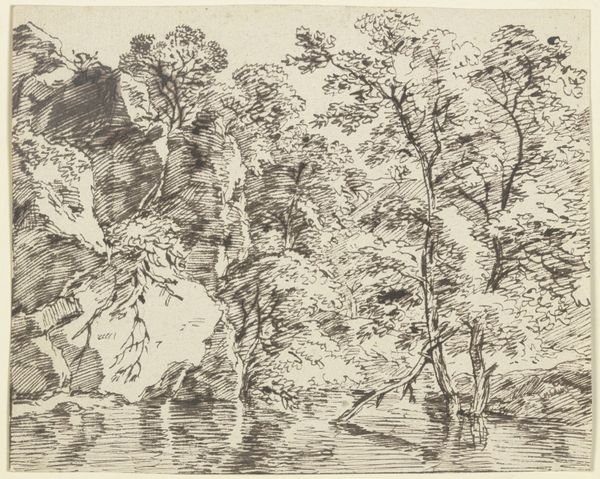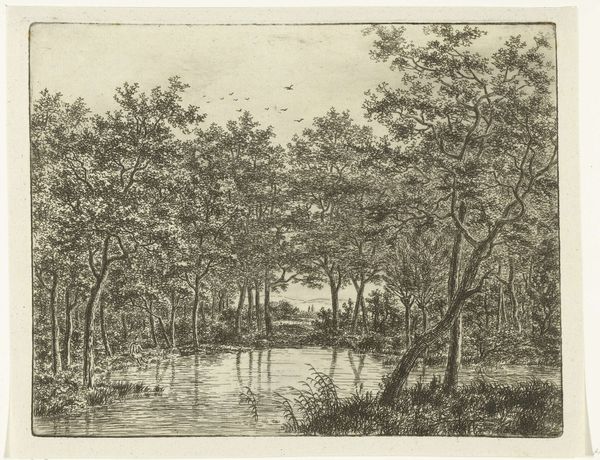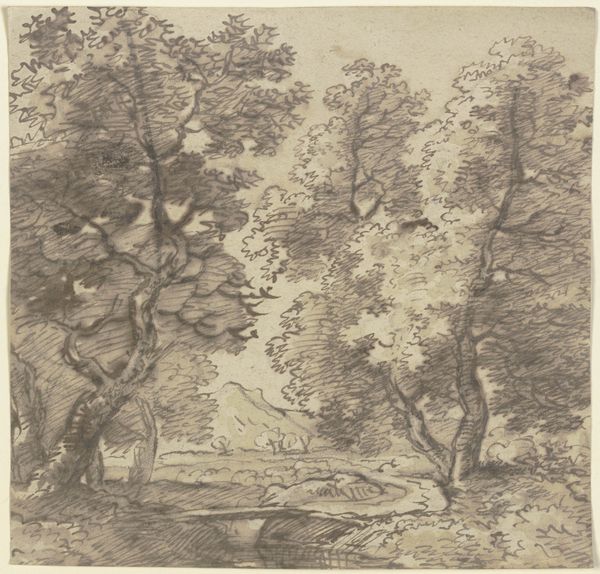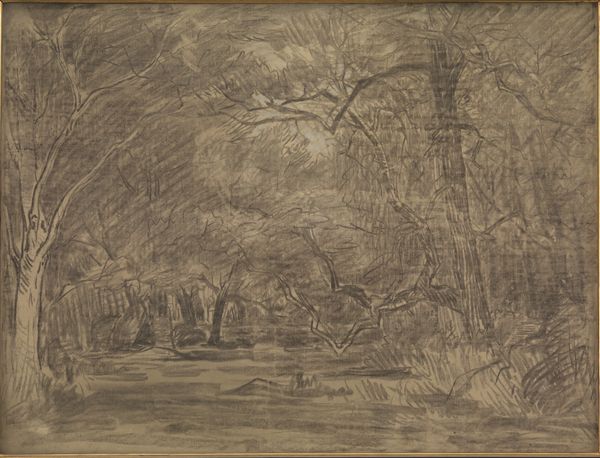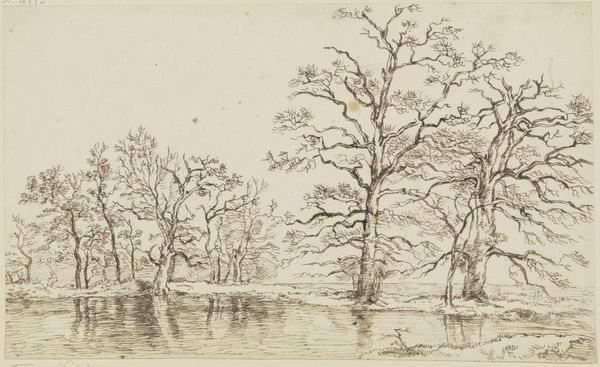
drawing, pencil
#
drawing
#
landscape
#
etching
#
romanticism
#
pencil
Dimensions: height 132 mm, width 155 mm
Copyright: Rijks Museum: Open Domain
Curator: At first glance, it’s almost monochrome, this density of brown. Brooding, but maybe inviting too. Editor: Indeed. We’re looking at a drawing titled “Boslandschap,” or “Wooded Landscape,” created by Ernst Willem Jan Bagelaar sometime between 1785 and 1837. The materials are pencil and possibly etching too. Curator: So interesting he combined etching with drawing. But those dense lines certainly make it heavy. Editor: The trees almost appear to press into one another. You know, in many Northern European mythologies, the forest symbolizes a space outside societal norms—a place of transformation, but also danger. Curator: I think that’s heightened here because there aren’t people represented in it. What were his influences? What would compel someone to make this statement? There are class connotations that often shape the experience of landscapes. Editor: Well, given the date, and the focus on nature's sublimity, it's hard not to situate it within Romanticism. But more specifically, the etching work alludes to traditions of Dutch landscape painting, while its brown wash evokes Old Master drawings. Think of it: water represents cleansing, reflection; and then a pencil. Curator: But who would experience this? In what setting? It’s critical to interrogate this work's power. Who can connect to nature as opposed to experiencing it through economic coercion? It’s all relevant when considering the work's reception and potential for reinterpretation. Editor: I agree about that critical element to understand the broader forces at play! Though in terms of imagery and emotions alone, even a contemporary viewer can sense the power. Consider the use of reflections in the water, suggesting hidden depths… Curator: Yes, seeing those symbols does create such an intriguing discourse between art and reality. I appreciate understanding his artwork and what role this image could play throughout his lifetime, and ours. Editor: Absolutely! These visual cues connect us to the artist's historical context. And together, all that meaning evolves continuously as we interpret these symbolic echoes across time.
Comments
No comments
Be the first to comment and join the conversation on the ultimate creative platform.


